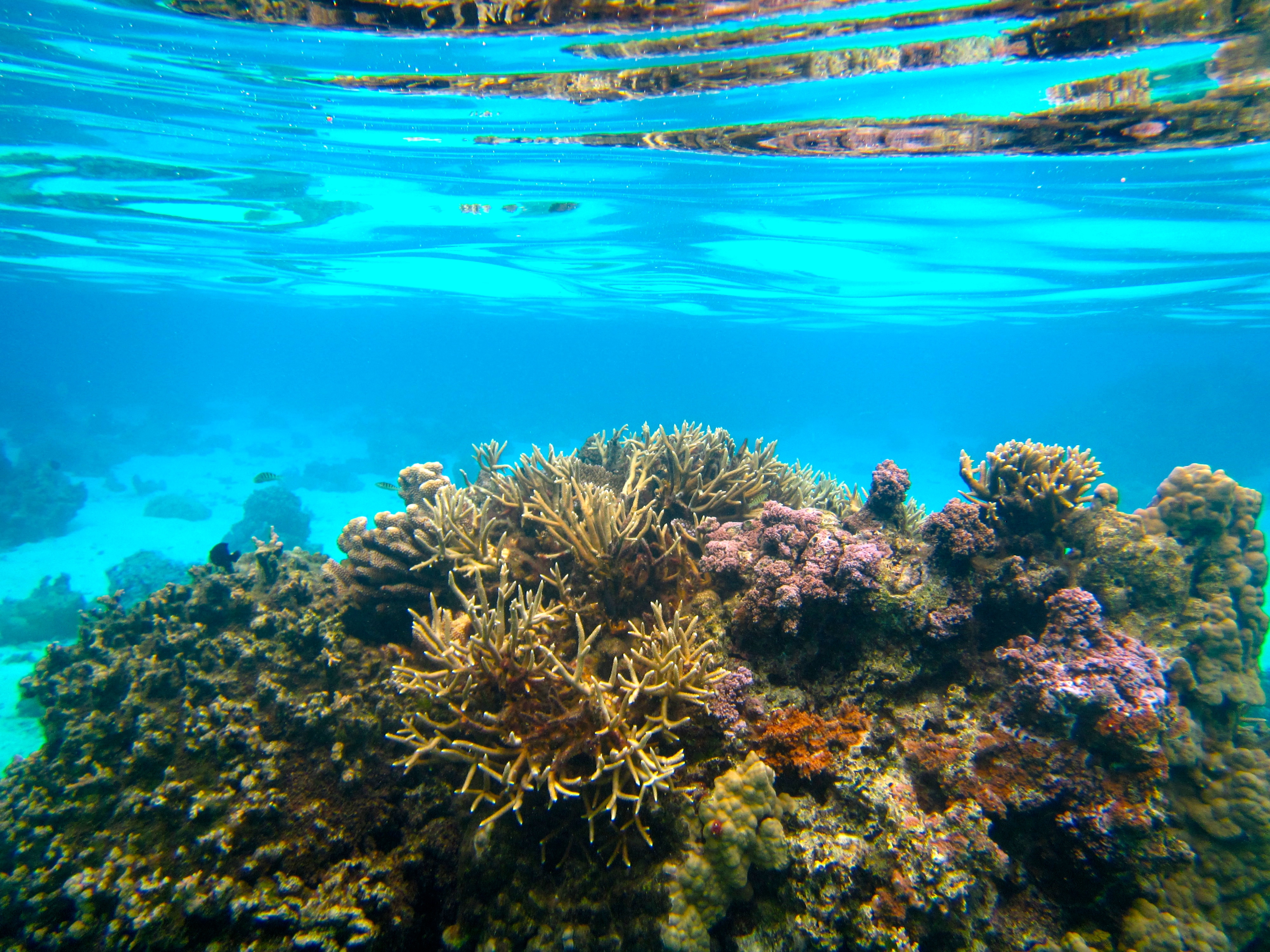
A vibrant coral reef ecosystem in Moorea.
Credit: Stella Swanson
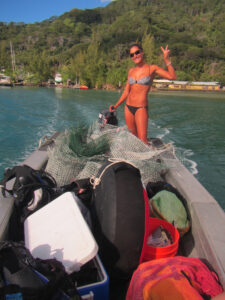
The author motoring out to the reefs.
Credit: Stella Swanson
I’m a coral reef ecologist. This means I go SCUBA diving every day to conduct my research in lovely tropical places where corals grow. It is pretty amazing work. During the months that I have to study the coral reefs in Moorea, French Polynesia (an island a few miles from Tahiti) I set up experiments in the ocean and sometimes in large salt water tanks on the shore. We (myself and other researchers I work with) drive small boats out to our research sites, gear up and hop in to do our work. Here, I am on my way out to a research site to set up an experiment using small cages. You can see my boat is absolutely loaded with equipment; I’m in for a long day in the water.
I’m often asked how deep I dive when I’m conducting my research and the answer is usually a surprise to my friends and family. Shallow! Holy moly it is shallow where I do my studies! The average depth on a typical dive is between 5-7 feet. You may ask, why the heck are you SCUBA diving if you can just stand up and breathe the air? That’s a great question, and sometimes I do snorkel while I do my work, holding my breath while I need to be under the water and coming up for air. But other times I need to be down on the sea floor for hours at a time counting or measuring small corals and would easily lose track if I went up for air. Here is a photo of me snorkeling on a typical day estimating how much coral is present on this coral reef. And another where I’m SCUBA diving to set up an experiment hauling heavy cinder blocks around with my experimental corals attached (and dancing around like they’re pom poms); so grateful for the lack of gravity under the water.
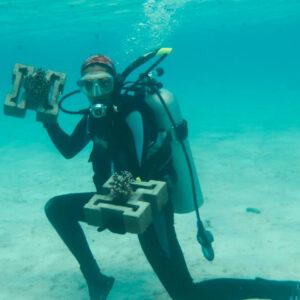
The author with cinderblocks “planted” with young coral.
Credit: Stella Swanson
One reason why I can do my research so shallow is because most corals grow very shallow. Corals rely on photosynthetic algae living within them and need clear water and lots of light to grow. On a coral reef most of the action happens in the first 30 feet of water depth. This turns out to be pretty convenient for coral reef scientists like myself because the deeper you SCUBA dive the more safety precautions you must take and the shorter the time you can be down at your maximum depth. If you dive super deep (near 100 feet) your time at the bottom can be limited to just minutes! It would take me a whole lot of dives to get to find and measure 500 corals at that rate.
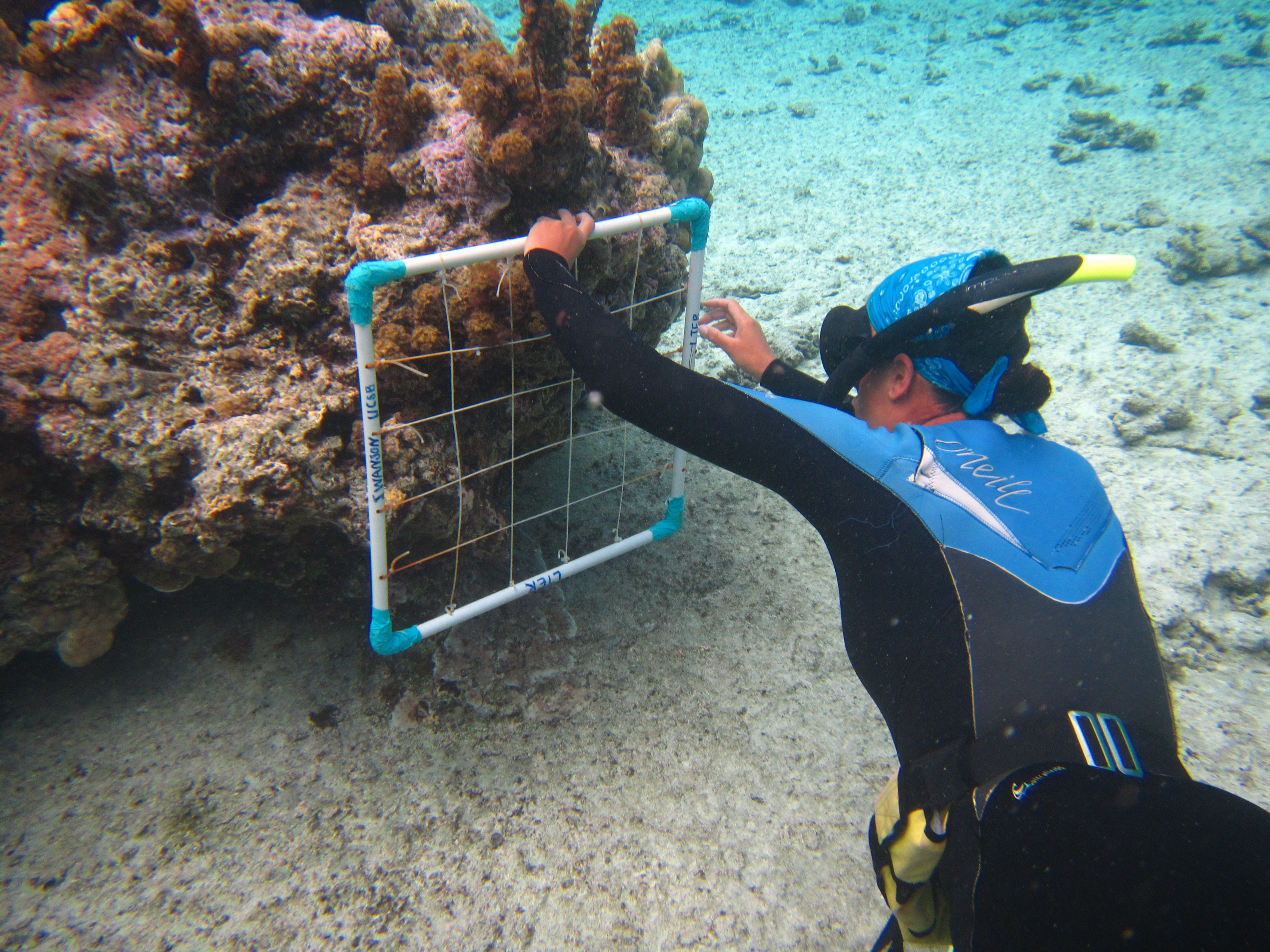
Sometimes surveying coral is shallow enough to just snorkel.
Credit: Stella Swanson
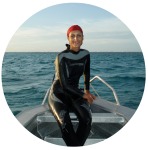
Author: Stella Swanson
Stella Swanson is a PhD student from the University of California, Santa Barbara. She studies how sea urchins and fish can influence the recovery of damaged coral reefs.










